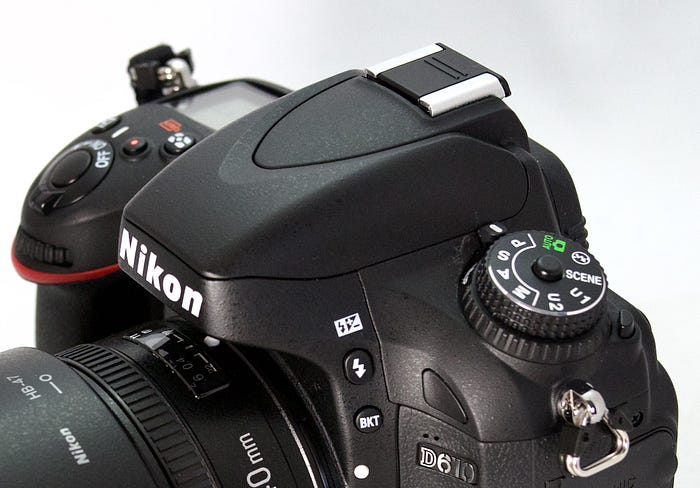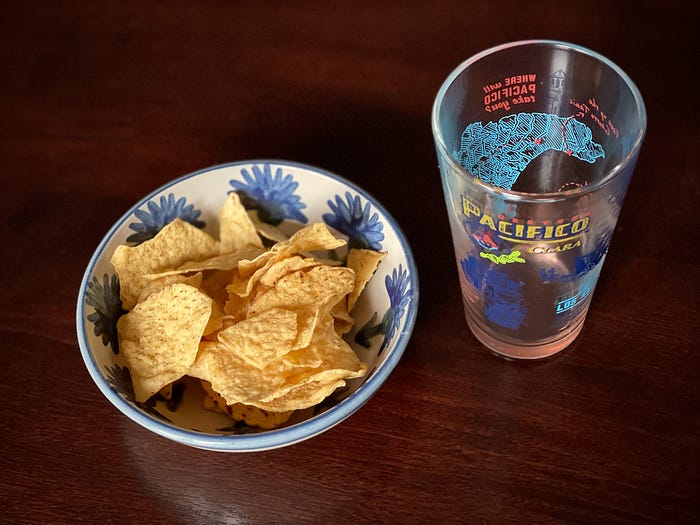

The Secret to Good Photography
source link: https://medium.com/live-view/the-secret-to-good-photography-e3335d5e1f9c
Go to the source link to view the article. You can view the picture content, updated content and better typesetting reading experience. If the link is broken, please click the button below to view the snapshot at that time.
The Secret to Good Photography
How the Answer Came to Me in a Mexican Restaurant

I was working in a camera bag booth at a birding show on a muggy Florida afternoon. Since most of the visitors were birders, not photographers, we didn’t have much to offer them. I wasn’t even sure why we were there.
“Maybe your spotting scope will fit in this lens case,” I said cheerfully trying to get the zipper to close.
By 2 o’clock I was numb with boredom and my feet were tired. Three hours to go before air conditioning and a cold beer. I was already hungry and open to any distraction that would pass the time.
An elderly lady walked up to the booth with a DSLR in her hand. I figured that she was more photographer than birder, so I straightened my posture and met her eye to eye.
“May I ask you a question,” she said while still a few feet from the counter.
“Of course.”
“I just finished a photography class and the instructor said that I wouldn’t get any quality pictures unless I shot in manual mode. He showed us how to do that, but for the life of me I just can’t remember.”
I studied her for a moment and saw that she was clearly perplexed. She then extended her arms toward me with camera in hand as if it were a peace offering.
“Can you help me?” she asked.
“Where do I begin,” I thought as I accepted the camera. Using manual mode requires some understanding of the exposure triangle — aperture, shutter speed, and ISO. There’s no magical manual mode setting. She would need to know how the camera interacts with light. I wasn’t sure how to answer her.
Then I had an idea.

“May I offer an alternative approach?” I asked. “What if I set your camera to program mode, then you can just go about taking pictures and not worry about the exposure settings.”
“Oh, no, that wouldn’t do at all,” she said with anxiety in her voice.
“Why’s that?” I replied.
“Well my photography teacher was very clear that program mode is for people who do not know what they are doing. And their pictures would be inferior. I don’t want bad pictures.”
I stepped back from the counter to grab a stool. “Do you mind if I sit while we talk?” The humidity seemed to be getting to me, and I was feeling a bit tired.
“Oh, please,” she said.
I positioned the stool in front of her, took a quiet breath, and changed tack.
“OK, I’m going to offer a different opinion than your photography teacher. It’s true that manual exposure mode is good for some situations. I use it myself at times. But if you’re in a hurry to get a shot, such as trying to record an egret that you happen upon, program mode is actually better because the camera does all the thinking for you, and you can just concentrate on framing the shot.”
“But the pictures won’t be as good,” she quickly responded.
“Odds are, actually, they will be better,” I replied.
She thought about this for a moment, then extended her hands motioning for me to hand her back the camera.
“Well, thank you for your time,” she said. “I will find someone who knows how to use manual mode.”
She turned and walked away.

A few hours later I was sitting at a square wooden table in a Mexican restaurant. I had already eaten half the bowl of tortilla chips and finished my beer. The server was nowhere in sight. I wanted to place an order for dinner. I was ravenous. It felt like eons since she said she would be right back.
My mind drifted to the earlier conversation with the elderly woman. “I’m also a photography teacher,” I thought. “What kind of messed up things have I done to my students?”
I took another chip and dipped it in the red salsa. I was trying to pace myself. But they tasted good.
There are many debates in photography: RAW vs Jpeg, full frame vs cropped sensor, film vs digital, and the pros and cons of altering the images in post production, just to name a few. We could spend more time arguing than actually taking pictures.
I spotted the server emerging from the kitchen. I made eye contact and smiled. She headed in my direction, but was stopped by a group of four at another table. They seemed very chatty.
I hate sounding like some gray area, wishy-washy academic, but there’s no one way to take a good picture. Photography is that rare craft that thrives on experimentation, exploration, and yes, sometimes, utter failure.
“That’s it!” I said out loud. “The secret to good photography is failure.”
She won’t succeed because she is afraid to fail. She needs not only to try program mode, but every other setting on that dial.
No one is keeping score. In baseball you’re a star if you hit a single a third of the time. Photography is even more forgiving. One great shot out of 20 is fantastic. Who cares about the other 19?
The last thing I want to do is smother this craft beneath the weight of rules and opinions. I made a promise to myself, right there in that restaurant, that I will forever champion failure in my teaching and writing.
I picked up the beer glass to toast this affirmation, tilted my head back, and drained the last few drops from the bottom.
When I lowered the glass, she was standing there.
“Looks like you could use another cold one,” the server said. “And would you like to order?”
She was a vision of hope. Her presence represented all that was good with the world. And in that moment, my cares washed away.
“Oh yes,” I said smiling. “I would love to.”
Recommend
About Joyk
Aggregate valuable and interesting links.
Joyk means Joy of geeK